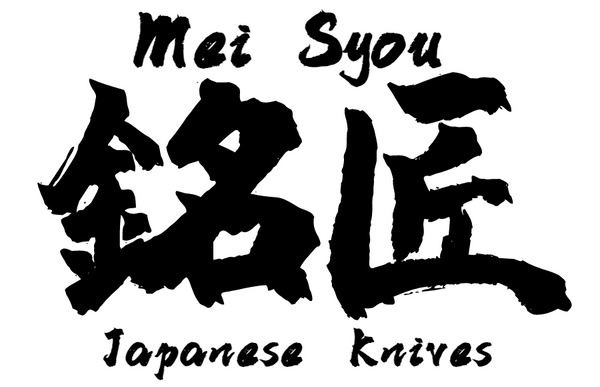Ultimate Guide
The Ultimate Guide to Buying the Best Japanese Knives
Japanese kitchen knives have become a favorite among both amateur and professional chefs worldwide. Their super sharp, thin, and lightweight blades make preparing food easier and more enjoyable. But, what is the best Japanese kitchen knife?

Of course, this is a very silly question to ask. There is not ONE best knife out there, especially when referring to Japanese knives. The best knife for you depends on a HUUUGE variety of factors: your skill level, style of knife you prefer (i.e. traditional vs. Western), knife type needed (i.e. what are you cutting?), your budget, and many other personal preferences.
There are a plethora of different types of Japanese knives to choose from, and the choices can be extremely overwhelming, especially for amateur chefs (like myself). Regardless of your current skill level though, you will find that a great knife will make cooking more fun, and help you become a better chef!
In this buying guide, my aim is to highlight the essential factors you want to consider before buying your own Japanese kitchen knives. I will then give some recommendations of knives you can consider purchasing. Please note that this guide is meant for amateur, or at-home chefs. Hopefully, some professional chefs can also find some of this information useful when choosing a Japanese kitchen knife!
Factors you should consider
Price / Steel type
Japanese knives can come in a huge range of prices…from around $50 to over $1000! Depending on your skill level, you want to spend accordingly.

More expensive knives are generally made with super high carbon steel (i.e. blue steel or white steel) and are possibly honyaki forged. High carbon steel knives are harder, so they can retain their sharp edge longer, but are also prone to chipping if used incorrectly or not maintained properly. Proper maintenance and regular sharpening are required for higher end knives. For this reason, these expensive high-carbon steel knives are recommended only for professionals.
Cheaper, entry level Japanese knives will probably use some sort of stainless steel alloy which is more durable, easier to maintain and resistant to rust. The downside is that cheaper knives will not hold their sharpness as long as higher end knives if used at the same frequency. Most at-home chefs need not worry about this as they will not be using their knife nearly as much as professionals.
If you are just learning to cook, it is not necessary to buy a super expensive knife. You still want to have a quality knife, but there is no need to go overboard. Think about it like buying a car. If you are still learning to drive, then there is no point in purchasing a Ferrari! A decent, serviceable, cheap Japanese knife will probably cost around $100.
Blade Style

Japanese knives come in either double bevel (Western style) or single bevel blades (traditional Japanese style). Single bevel knives are generally meant for professional chefs, as they are can make very detailed cuts, or have very specific use cases (e.g. sushi knives / yanagi). The feel of using a single-bevel knife is much different, and takes a lot of practice to get used to. If you are not a professional, I would recommend a Western style blade to start as it is easier to use.
Type of Knife

Five of the many Japanese knife types
For each blade style (i.e. Western or Traditional), there are numerous knife types. Many of these knife types have specific usages (vegetable, fish, carving, butchering, etc.), but there are two Japanese knives that are meant for general usage — Gyuto (i.e. Japanese chef’s knife), and Santoku. Both of these knives use Western style blades (i.e. double bevel), and are known as all-purpose knives, as they can be used for vegetables, meat or fish. I recommend beginners to start off with either a gyuto or santoku, then progress from there. Gyuto knives typically comes in much longer blade sizes (8 to 10 inches / 20 to 25cm) than the santoku (6 to 7 inches / 15 to 18cm), so if you are generally working in smaller spaces, then you should consider a santoku.
Handle Type

Nakiri vegetable knife with traditional Japanese handle
One last thing to consider is the handle type. Japanese knives can come with a Western style handle or traditional Japanese handle. The Western handle is heavier, grip form shaped and secured through the tang of the blade with rivets. They feel sturdier, and are more suitable for brute force cutting tasks. Traditional Japanese handles are cylindrical, lighter, and always made of wood. Traditional Japanese style handles may feel awkward to those who have never used them before, but can provide a more delicate touch and control once accustomed to the feel. In the end, the choice of handle type comes down to your own personal preference.
Conclusion
A great Japanese knife will make your preparing meals more enjoyable, and help make you a better chef. There are many factors to consider when picking your first Japanese knife, and the options/variations can be extremely overwhelming. Steel type, blade style, handle style, knife type, and price are some of main things to consider when buying.
As an amateur chef, I recommend starting with a decent, entry-level gyuto (i.e. chef’s knife) or santoku (all-around knife), before venturing off into the endless array of knife types (nakiri, yanagi, deba etc.). I hope that this guide was helpful in helping you choose your Japanese kitchen knife!
